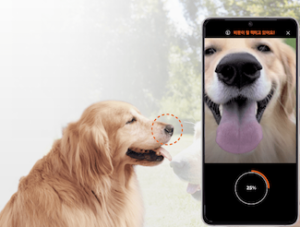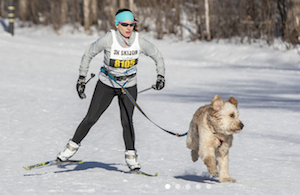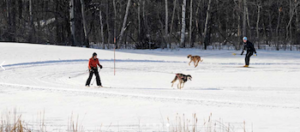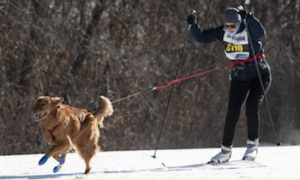Welcome to the Week’s Review of Canine Social Media
Welcome to this Special Feature on the DoggieU K9 Blog for an update on this week’s dog-related social media from around the world. There are so many stories. Here we will share some of the best stories this week.
Enjoy & share them.
Interested In Skijoring With Your Dog This Winter?
- If you have tried or enjoy cross-country skiing, it may be time to include your dog in your winter sports. One of these winter dog sports is skijoring. The AKC describes that skijoring is derived from the Norwegian word for “ski driving.” It’s cross-country skiing with a dog. This sport generally involves one to two dogs, a pair of skis and a pulling harness. It’s also described as a mushing activity, consisting of one or two dogs towing someone while he/she is skiing behind them.
- The first step is for you to know how to cross-country ski. You must be good at cross-country skiing alone before you start skijoring with your dog. If you are seriously interested then lessons for you may be a good idea.
- The next step is to speak with your veterinarian about starting skijoring or any other dog sport. It is best to consider using dogs who are natural pullers and runners would be generally well-suited for skijoring and include the athletic mixed breeds: Alaskan and Siberian Huskies, Malamutes, Samoyeds, German Shorthaired Pointers, Border Collies, Greyhounds and Golden and Labrador retrievers.
- For successful participation in skijoring with your dog, according to doggiesport.com, is to have the right gear for the sport. This includes ski essentials including skis, poles, boots and outdoor clothing for you. Paw protection, wax or dog boots and poop bags for your dog. Other equipment includes an appropriate dog harness, towline and hip belt. Food and water are also items to take along.
- If you are a cross-country skier or if you have ever considered it as a winter sport, adding your canine best friend can add a whole new dimension to the sport. It is quite popular in many US communities and around the world.
- [Link] [Doggiesport]
Humans Have Finger Prints, Dogs Have Nose Prints? Biometrics for dogs via smartphones.
- The latest technology in progress to identify your dog – nose prints. Could this be an alternative to implanted microchips?
- At a recent 2022 Consumer Electronics Show (CES) which showcases upcoming consumer electronics, technologies and ‘next have-to-have’ products, a special ‘best of CES Innovation ‘ award went to the Samsung StartUpDeveloper Labs who created a dog nose ID app. The Petnow app lets you use your dog’s nose print to identify them if they get lost rather than using implanted microchips. The app uses AI to analyze the unique wrinkles in the dog’s nose — which remain unchanged over time, much like fingerprints — and aims to help reconnect pets with owners.
- The App is an artificial intelligence-driven smartphone application that introduces a revolutionary solution to identify dogs with the unique patterns on their noses. The software claims to have over a 98 percent accuracy rate.

- A proprietary technology is used to register and inquire nose prints of dogs’ noses, each of which has its unique patterns. When a dog owner runs the app, 3 types of artificial intelligence will assist users for nose print registration. By registering a dog’s profile with the nose print, the owner is provided with an additional method to be notified in case of the dog becomes missing.
- While canine nose prints have been a recent introduction at the CES show, the technology has been a ‘work-in-progress’ for a couple of years. IAMS has also been testing a software that they are interested in to scan and catalogue dog nose prints. Thus far they have been testing and evaluating their technology only in Nashville, TN but there are plans to make it more broadly available.
- Needless to say, this truly seems to be an emerging technology that may blossom into the ‘next best tech’ for dog owners. Imagine other applications for this technology!
- Imagine, for example: you are traveling with your dog, outside the country. You show your passport to identify you. The customs agent scans your dog’s nose to identify him/her. Security is becoming an important issue. Another example. You need to visit a vet in another state. a quick scan of your dog’s nose offers their medical record to expedite treatment and reveal allergies and previous history. Welcome to your dog’s future! [Petnow] [IAMS] [Video]



